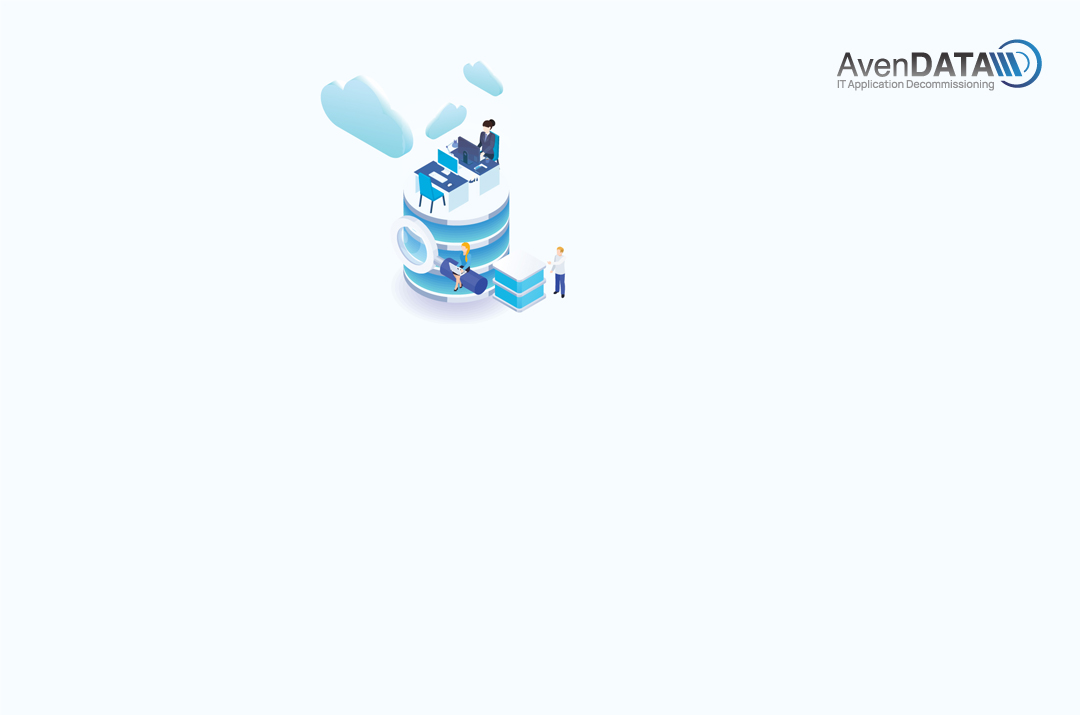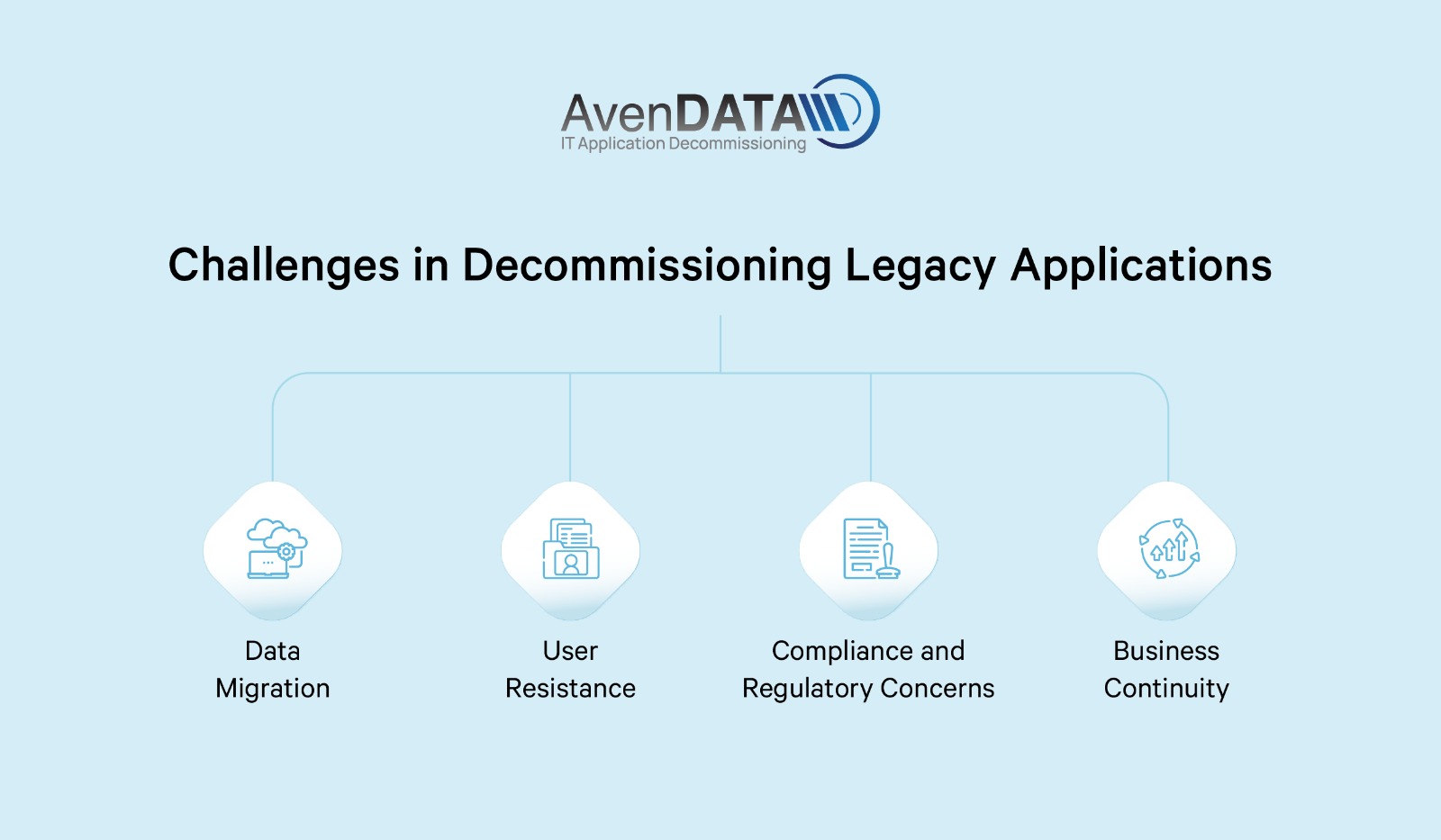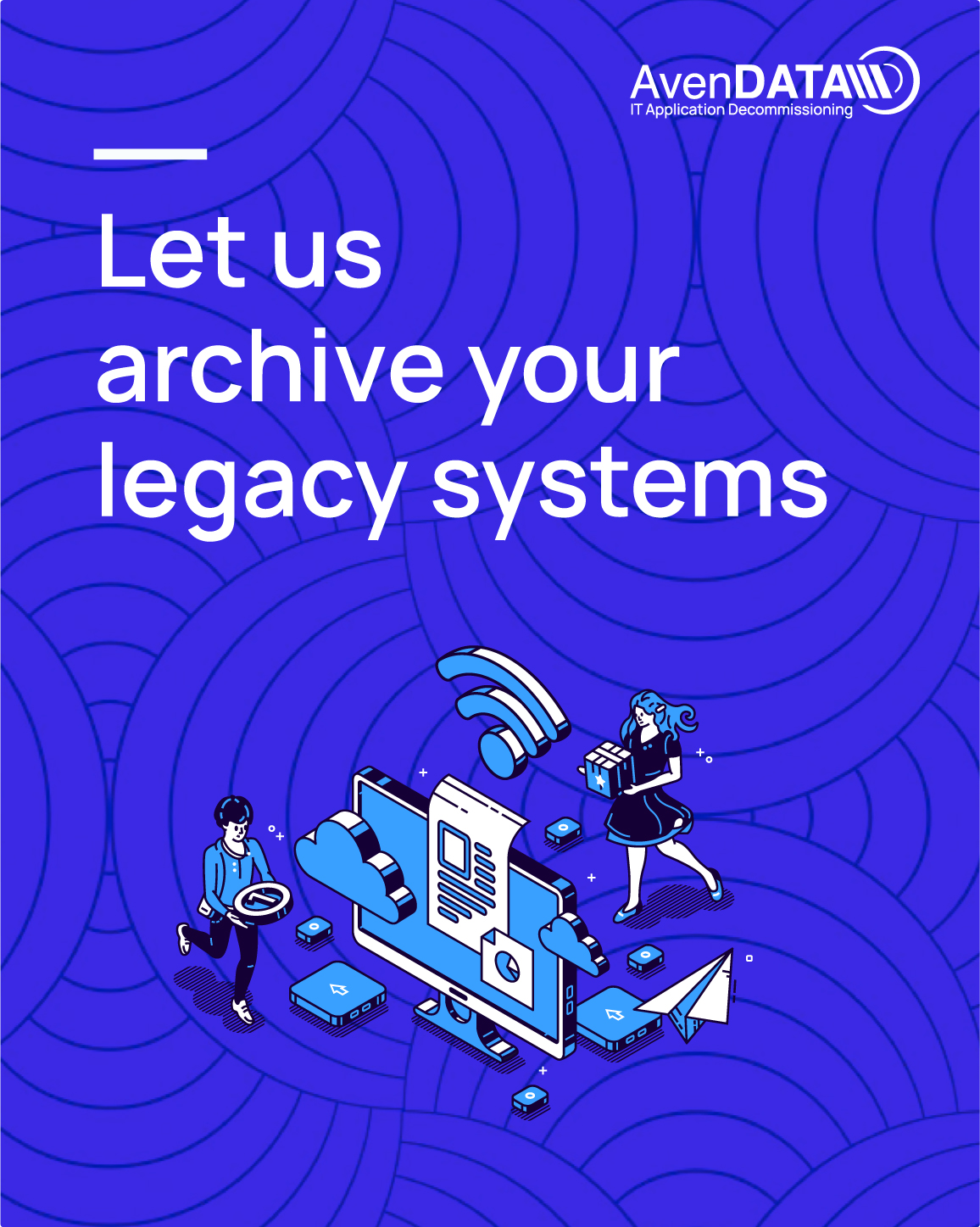Application Decommissioning: Benefits, Challenges, Checklist and Best Practices
By AvenDATA

Why do we decommission applications?
As organizations grow and evolve, they accumulate numerous applications over time. However, advancements in technology render some of these applications outdated, unsupported, or redundant, resulting in escalated maintenance costs and operational inefficiencies. Application decommissioning comes to the rescue by eliminating unnecessary complexities, reducing licensing and maintenance expenses, and optimizing resources effectively.
Benefits of Application Decommissioning
Application decommissioning offers numerous advantages for organizations looking to modernize their IT infrastructure and streamline operations. Here are some of the key benefits:
Cost Savings: Retiring outdated applications eliminates the need for costly maintenance and support, freeing up resources to invest in more strategic IT initiatives.
Improved Efficiency: Removing legacy applications can streamline business processes and reduce complexities, leading to improved overall efficiency and productivity.
Enhanced Security: Legacy applications often lack modern security features, making them vulnerable to cyber threats. Decommissioning these systems and migrating to newer, more secure applications strengthens data protection.
Compliance and Risk Management: Transitioning away from legacy applications ensures that the organization complies with industry regulations and reduces potential compliance risks associated with outdated systems.
Increased Agility: Modern applications are designed to be more flexible and adaptable, allowing organizations to respond quickly to changing market demands and business requirements.
User Experience Improvement: New applications are user-friendly and offer better interfaces, leading to an enhanced user experience and increased user satisfaction.
Data Consolidation and Integration: Application decommissioning helps consolidate data from disparate systems into centralized, integrated platforms, enabling better data analysis and decision-making.
Resource Optimization: Decommissioning legacy applications enables organizations to optimize resources, including hardware, software, and IT staff, for more strategic initiatives.
Scalability: Modern applications can scale with the organization’s growth, accommodating increased demand and providing a foundation for future expansion.
Easier Maintenance and Support: Newer applications typically have more comprehensive support and documentation, making ongoing maintenance and troubleshooting more manageable.
Reduction of Data Silos: Decommissioning legacy applications breaks down data silos, enabling seamless data exchange and collaboration across departments.
Faster Innovation: By freeing up resources from maintaining legacy applications, organizations can focus on innovation and the development of new products or services.
Competitive Advantage: Embracing modern technologies through application decommissioning allows organizations to gain a competitive edge by staying ahead of competitors in terms of efficiency and agility.
Long-term Cost Efficiency: While decommissioning may involve initial investments, the long-term cost efficiency of modern applications and reduced maintenance costs outweighs the initial expenditure.
Future-proofing: Transitioning to modern applications ensures that the organization is better equipped to adapt to technological advancements and changes in the industry landscape.
The Challenges in Decommissioning Legacy Applications

Decommissioning legacy applications is a complex process that requires careful planning and execution. Some of the common challenges faced by organizations include:
Data Migration: Transferring data from legacy systems to modern platforms while ensuring data integrity can be a daunting task.
User Resistance: Users may be accustomed to legacy systems, and transitioning to new applications can lead to resistance and training requirements.
Compliance and Regulatory Concerns: Retiring applications with historical data requires adherence to compliance and regulatory requirements to ensure data retention and accessibility.
Business Continuity: Decommissioning applications should not disrupt business operations, and a seamless transition is essential for ensuring continuity.
Application Decommissioning Checklist
Below is a checklist for the application decommissioning process:
Assessment and Planning:
- Identify legacy applications that need to be decommissioned.
- Evaluate the impact of decommissioning on business processes.
- Determine data retention requirements and archival strategies.
Data Migration and Archiving:
- Plan data extraction from legacy applications.
- Transform and format data for migration to new systems.
- Ensure data integrity during the migration process.
- Archive historical data for compliance and reference purposes.
Retirement and Sunsetting:
- Inform stakeholders about the decision to decommission the application.
- Set a clear timeline for the application’s retirement.
- Disable access to the application for users and stakeholders.
- Ensure all relevant data is transferred to new systems.
Modernization and Implementation:
- Select appropriate modern applications to replace the legacy system.
- Test and verify the functionality of the new applications.
- Train users and stakeholders on the new systems.
- Implement security measures to safeguard sensitive data.
Risk Assessment and Mitigation:
- Identify potential risks associated with the decommissioning process.
- Develop mitigation strategies to address identified risks.
- Monitor and address any unforeseen challenges during the process.
Communication and Change Management:
- Communicate the decommissioning plan and its impact to all stakeholders.
- Provide regular updates on the progress of the decommissioning process.
- Offer support and training to users adapting to the new applications.
Testing and Validation:
- Conduct thorough testing of the new applications for functionality and compatibility.
- Validate data accuracy after migration to new systems.
- Ensure that the new applications meet the desired performance standards.
Documentation and Knowledge Transfer:
- Document the entire application decommissioning process for future reference.
- Transfer knowledge and documentation to relevant teams for ongoing support.
- Provide training materials and resources for using the new applications.
Post-Decommissioning Review:
- Evaluate the success of the application decommissioning process.
- Gather feedback from users and stakeholders on the new applications.
- Address any post-decommissioning issues or concerns promptly.
Monitor and Maintain:
- Continuously monitor the performance and efficiency of the new applications.
- Regularly review data security measures to protect against potential threats.
- Address any maintenance or updates required to keep the new applications running smoothly.
By following this checklist, organizations can ensure a well-organized and successful application decommissioning process, leading to improved efficiency, reduced costs, enhanced security, and the ability to adapt to technological advancements in the future.
Application decommissioning refers to the strategic retirement of outdated legacy applications that are no longer needed. It helps organizations reduce IT maintenance costs while ensuring compliance and retaining historical data.
As organizations grow and evolve, they accumulate numerous applications over time. However, advancements in technology render some of these applications outdated, unsupported, or redundant, resulting in escalated maintenance costs and operational inefficiencies. Application decommissioning comes to the rescue by eliminating unnecessary complexities, reducing licensing and maintenance expenses, and optimizing resources effectively.
The application retirement/Application Decommissioning process involves the following steps:
- System Analysis: Analyzing the legacy system to estimate the archiving period, cost, and initiate the decision-making process.
- The Archiving Project: A kick-off meeting with an experienced project manager to discuss the project details.
- User Acceptance Test: Testing samples, verifying documentation, and receiving an acceptance report from AvenDATA.
- System Shutdown: After acceptance, the legacy system can be shut down, and the necessary information can be properly archived.
- Ongoing Support: AvenDATA provides full customer support, including assistance during audits, training, and employee transitions.
The benefits include cost savings, improved efficiency, enhanced security, compliance adherence, resource optimization, and future-proofing.
The plan includes data preservation, technological notifications, access to legacy system data, and consideration of legal implications.
The checklist includes assessment and planning, data migration and archiving, retirement and sunsetting, modernization, risk assessment, communication and change management, testing and validation, documentation and knowledge transfer, post-decommissioning review, and continuous monitoring and maintenance.
-
How Legacy Systems Work and Their Architecture
-
Legacy Systems in Digital Era:
-
SAP Carve-Out Guide: Definition, Process, Benefits
-
System Decommissioning: A Strategic Guide
-
20 Reasons why legacy ERP systems must be archived and data should not be deleted
-
IT Mergers and Acquisitions: The ABCs of a Successful Integration
-
Mastering IT M&A and Carve-Outs: Addressing Pain Points with Practical Solutions
-
Modernizing Legacy Systems: A Strategic Guide for IT Company Owners
-
The importance of legacy systems is steadily increasing
-
Ten Key Questions with Emanuel Boeminghaus



